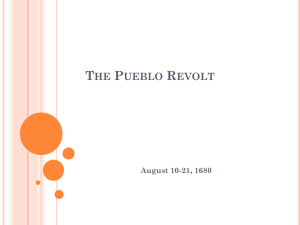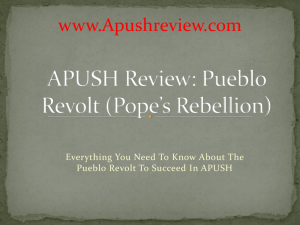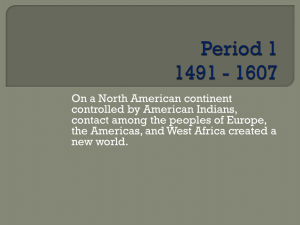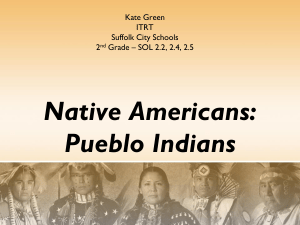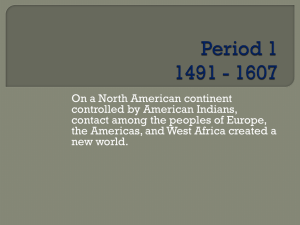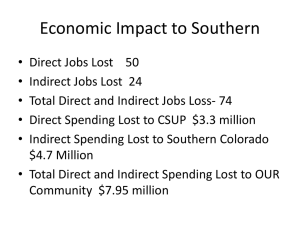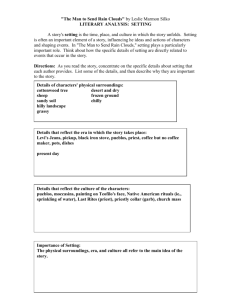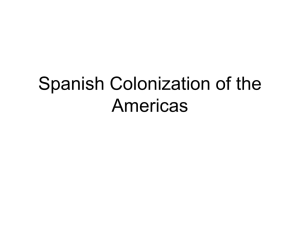New Mexico Office of the State Historian : Pueblo Revolt, 1680 -
advertisement
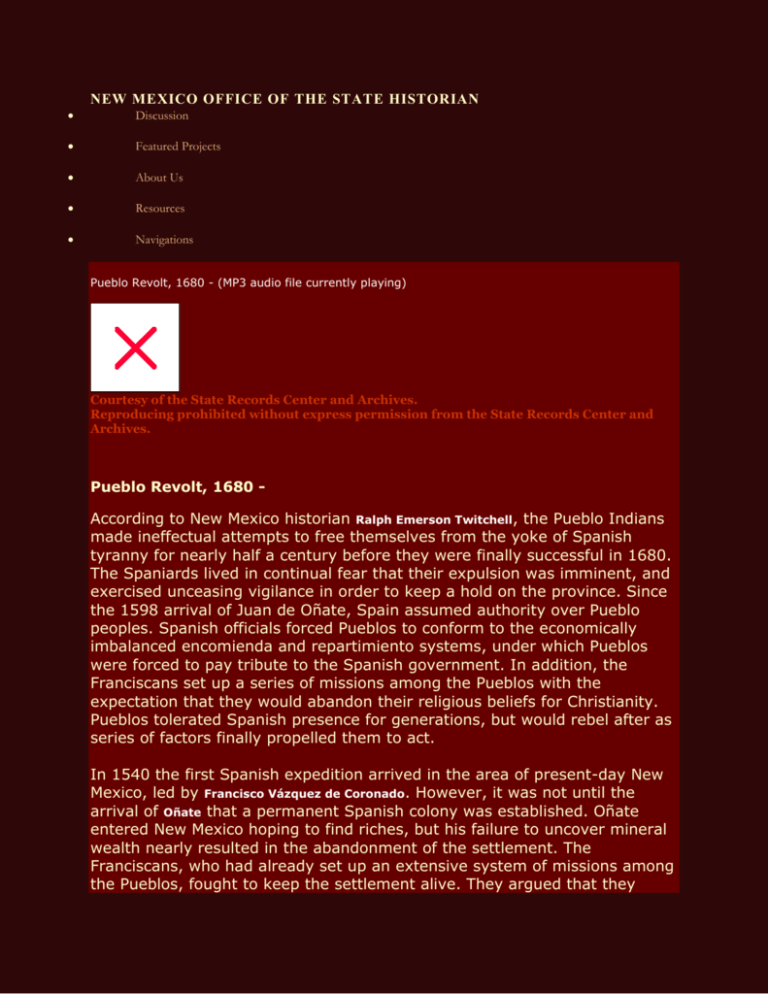
NEW MEXICO OFFICE OF THE STATE HISTORIAN Discussion Featured Projects About Us Resources Navigations Pueblo Revolt, 1680 - (MP3 audio file currently playing) Courtesy of the State Records Center and Archives. Reproducing prohibited without express permission from the State Records Center and Archives. Pueblo Revolt, 1680 - According to New Mexico historian Ralph Emerson Twitchell, the Pueblo Indians made ineffectual attempts to free themselves from the yoke of Spanish tyranny for nearly half a century before they were finally successful in 1680. The Spaniards lived in continual fear that their expulsion was imminent, and exercised unceasing vigilance in order to keep a hold on the province. Since the 1598 arrival of Juan de Oñate, Spain assumed authority over Pueblo peoples. Spanish officials forced Pueblos to conform to the economically imbalanced encomienda and repartimiento systems, under which Pueblos were forced to pay tribute to the Spanish government. In addition, the Franciscans set up a series of missions among the Pueblos with the expectation that they would abandon their religious beliefs for Christianity. Pueblos tolerated Spanish presence for generations, but would rebel after as series of factors finally propelled them to act. In 1540 the first Spanish expedition arrived in the area of present-day New Mexico, led by Francisco Vázquez de Coronado. However, it was not until the arrival of Oñate that a permanent Spanish colony was established. Oñate entered New Mexico hoping to find riches, but his failure to uncover mineral wealth nearly resulted in the abandonment of the settlement. The Franciscans, who had already set up an extensive system of missions among the Pueblos, fought to keep the settlement alive. They argued that they could not abandon those Pueblos that had already converted. In 1608, the Spanish government agreed with the Franciscans and continued to fund the venture with royal coffers. Despite Franciscan attempts to facilitate conversion by fostering a sense of congruity between the two religious. Spanish Catholicism and Pueblo belief systems remained deeply irreconcilable. On the surface some Pueblos accepted the Catholic religion, however they also kept their traditional beliefs close to the heart. A sense of syncretism did not result from the two belief systems instead the Pueblos learned how to compartmentalize or keep these often-opposing religions separate. In response, the Spanish punished Pueblo individuals that continued to maintain their native religion. Spanish oppression reached such a height that the Pueblos resolved to take it no longer, and decided by consensus to rid themselves of this tyranny forever. On 10 August 1680, a mostly united Pueblo front launched a surprise attack, forcing the colony of nearly two thousand Spaniards and Indian converts to retreat to the southern most mission of Guadalupe del Paso, present-day Ciudad Juárez in Mexico. Pueblo runners delivered knotted cords to each village. These cords worked as calendars, with each knot representing the number of days until the uprising. The last knot was supposed to be untied on 11 August, but Spanish leaders learned of Pueblo plans when they captured two messengers on 9 August. Despite the uncovering of the plot, the Pueblos still managed to catch the Spanish off guard and laid siege on the capital of Santa Fe, where many Spaniards had fled. Gov. Antonio de Otermín and settlers held out in the city until 21 September, when the Pueblos allowed the group to retreat south. During the revolt, Spanish records estimate that more than four hundred Spanish settlers had been killed, and twenty-one Franciscans had been murdered. Significant numbers of Pueblos died during the uprising as well. Several factors may have inspired the Pueblos to finally stand up to their oppressors. Drought, famine, and increasing intertribal warfare were exacerbated by the heavy handedness of the Spanish government, which is clearly demonstrated by the implementation of the encomienda and repartimiento systems, and Spanish persecution of Pueblo religion and cultural beliefs. Also at play were tensions created by the melding of cultures in which cognitive dissonance (a psychological phenomenon in which discomfort arises from the discrepancy between what one already knows or believes, and the introduction of new ideas and patterns of learning) further alienated the Pueblos from the Spanish interlopers. Pueblos were forced to accommodate the Spanish belief system and abandon their own embedded ideals, to which many Pueblos remained wholly committed. In this case the Pueblos were destined to resist because accommodation is more difficult than assimilation. Some historians have also theorized about the impact of charismatic leadership on the Pueblo Revolt’s success, and the identity of this leadership. Popé, a religious leader from the Tewa village of San Juan is generally accepted by the Pueblo and among some scholars as the leader of the revolt. In 1675 Popé, like other religious leaders, had been arrested by the Spanish for continuing to practice his Pueblo beliefs. However, historian Fray Angélico Chávez argues that Domingo Naranjo, a mulatto, masterminded the revolt by presenting himself as Pohé-yemo, a key figure in Pueblo cosmology. Chávez and others have viewed Pueblo people as incapable of rising in revolt because of their particular cultural values and organization. Chávez postulated that the Pueblos could not have revolted without a leader who saw things differently from the Pueblo worldview. As a person of mixed heritage, Naranjo may have been able to move more fluidly between Pueblo and Spanish worlds. During the twelve-year absence of the Spanish, the united Pueblo front that had proved so successful during the Pueblo Revolt fell apart, leaving the Pueblos vulnerable to the reassertion of Spanish power. In 1692, Diego de Vargas entered the region and reestablished a series of Spanish settlements, while the Franciscans once again implemented missions in Pueblo villages. Despite the return of the Spanish, many modern Pueblo peoples credit the Pueblo Revolt with preserving their Native beliefs and cultural ways as they continue to exist even today. Sources Used: Chávez, Frey Angélico. “Pohé-yemo’s Representative and the Pueblo Revolt of 1680,” New Mexico Historical Review 42, no. 2 (1967): 85–126. Foucault, Michel. Discipline and Punish: The Birth of the Prison. Trans. Alan Sheridan. New York: Pantheon Books, 1977. Ortiz, Alfonso. The Pueblo. New York: Chelsea House Publishers, 1994, 52– 55. Sanchez, Jane C. “Spanish Indian Relations During the Otermin Adminstration, 1677–1684.” New Mexico Historical Review 58, no. 2 (1963): 133–51. Sando, Joe. Pueblo Nations: Eight Centuries of Pueblo Indian History. Santa Fe, N.Mex.: Clear Light Publishers, 1992, 63–69. Simmons, Marc. New Mexico: An Interpretive History. New York: Norton, 1977, 45–76. Twitchell, Ralph Emerson. The Leading Facts of New Mexico History, Vol. 1. Albuquerque, N.Mex.: Horn & Wallace Publishers, 1963, 354–377. Weber, David J. What Caused the Pueblo Revolt of 1680: Readings. Selected and Introduced by David J. Weber. Historians at Work Series. Boston: Bedford/St. Martins, 1999. Return to Search Results Credits Instructions Contribute Essays Podcasts Today In History Search: © 2004-2010 New Mexico State Record Center and Archives
